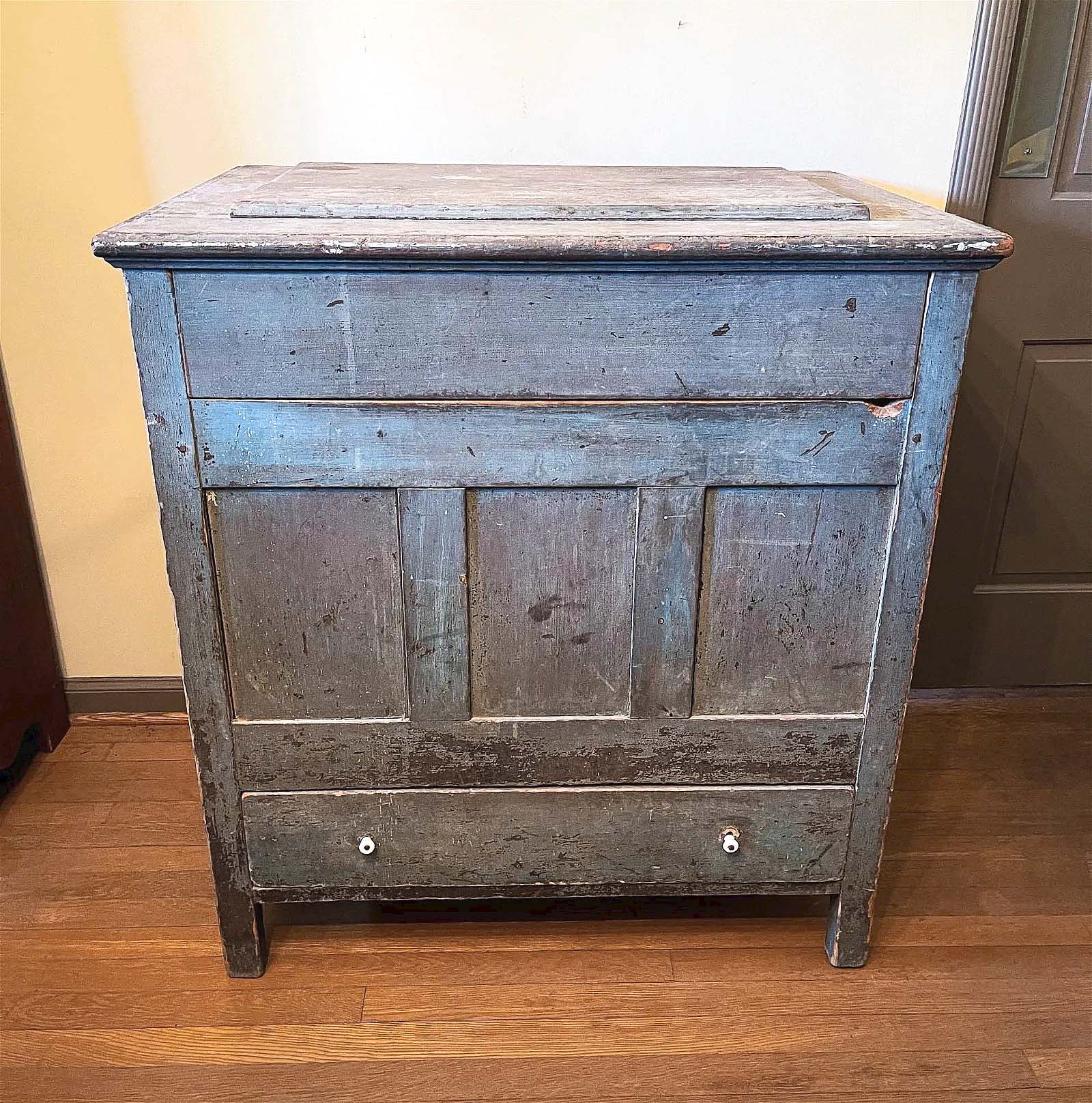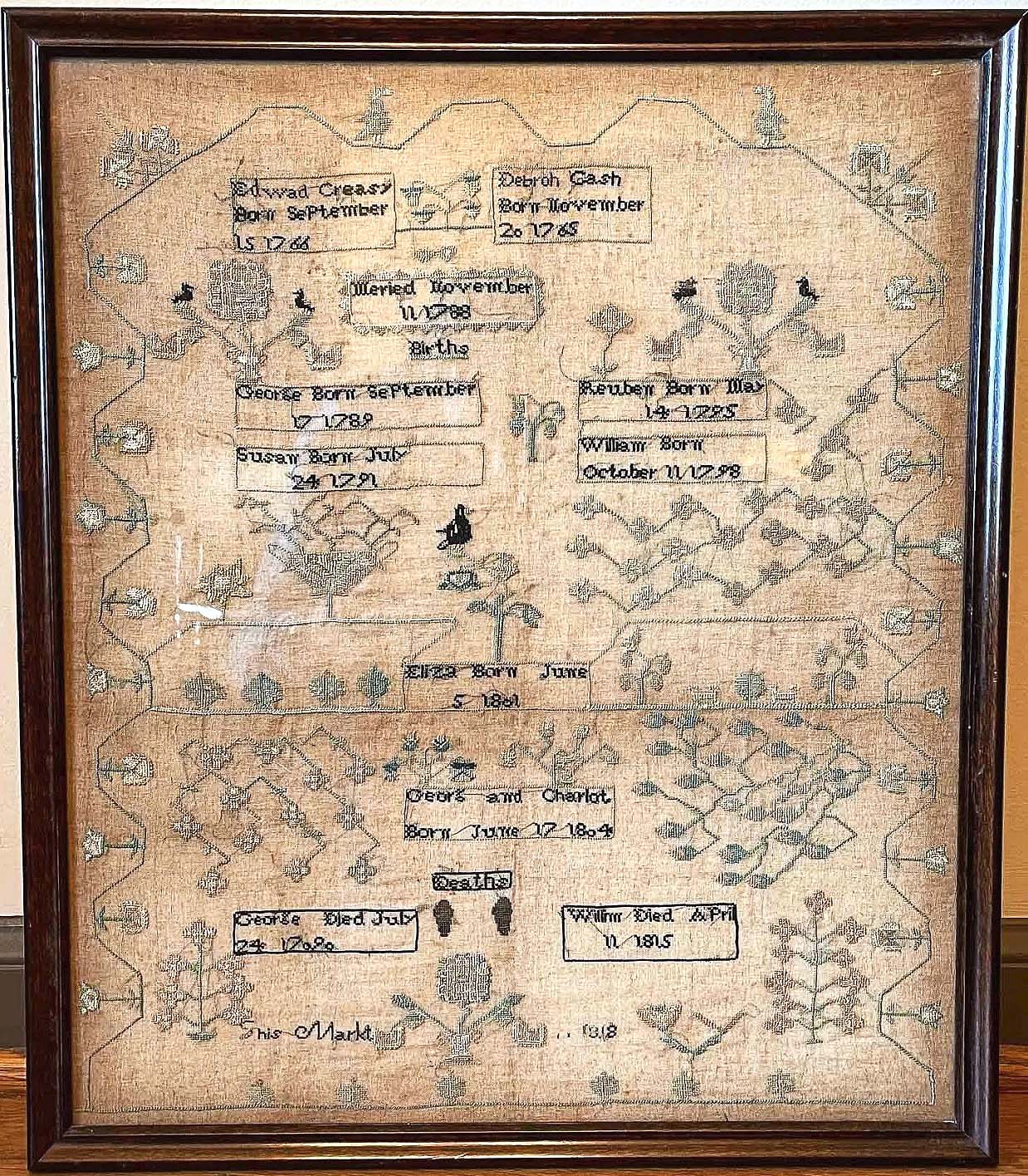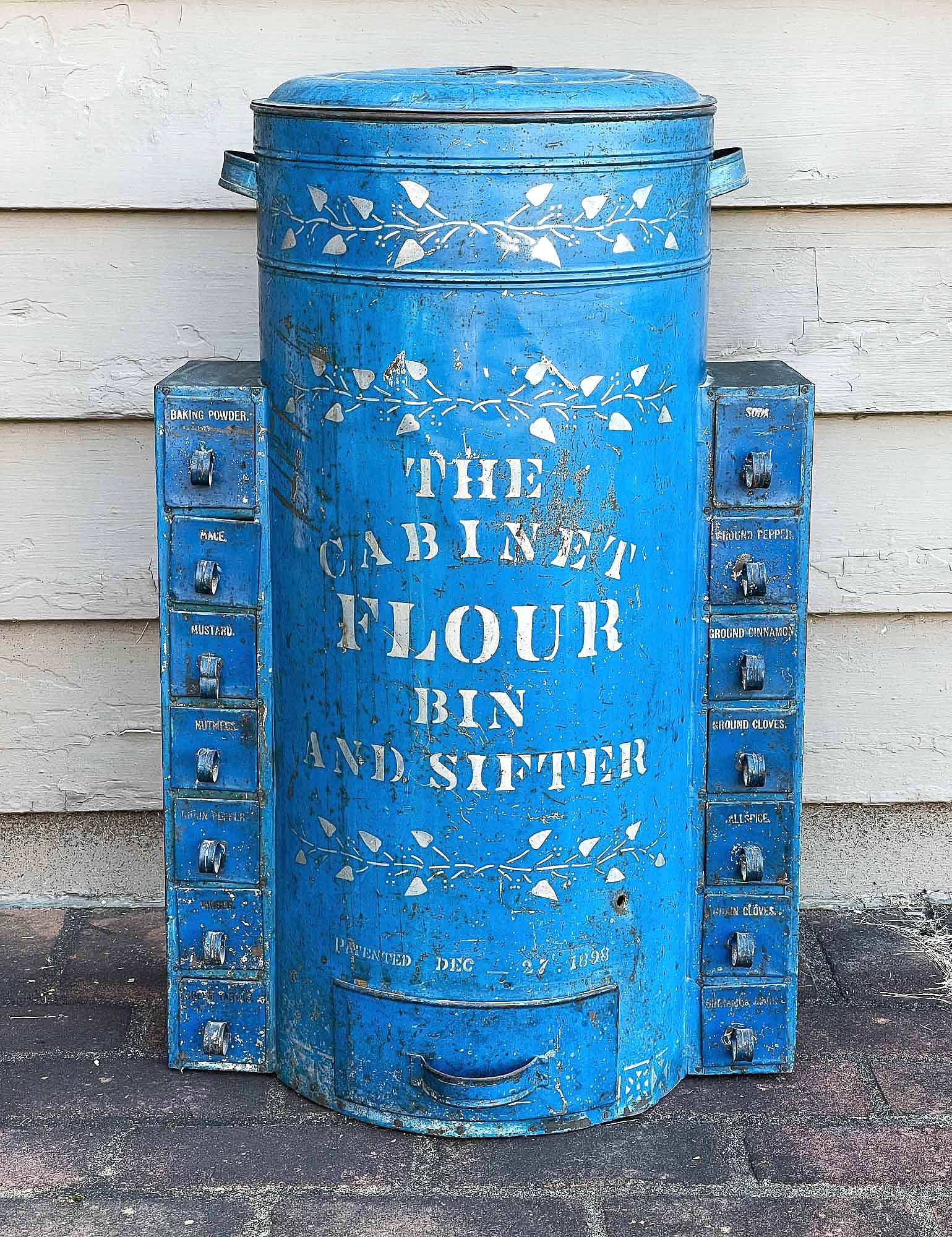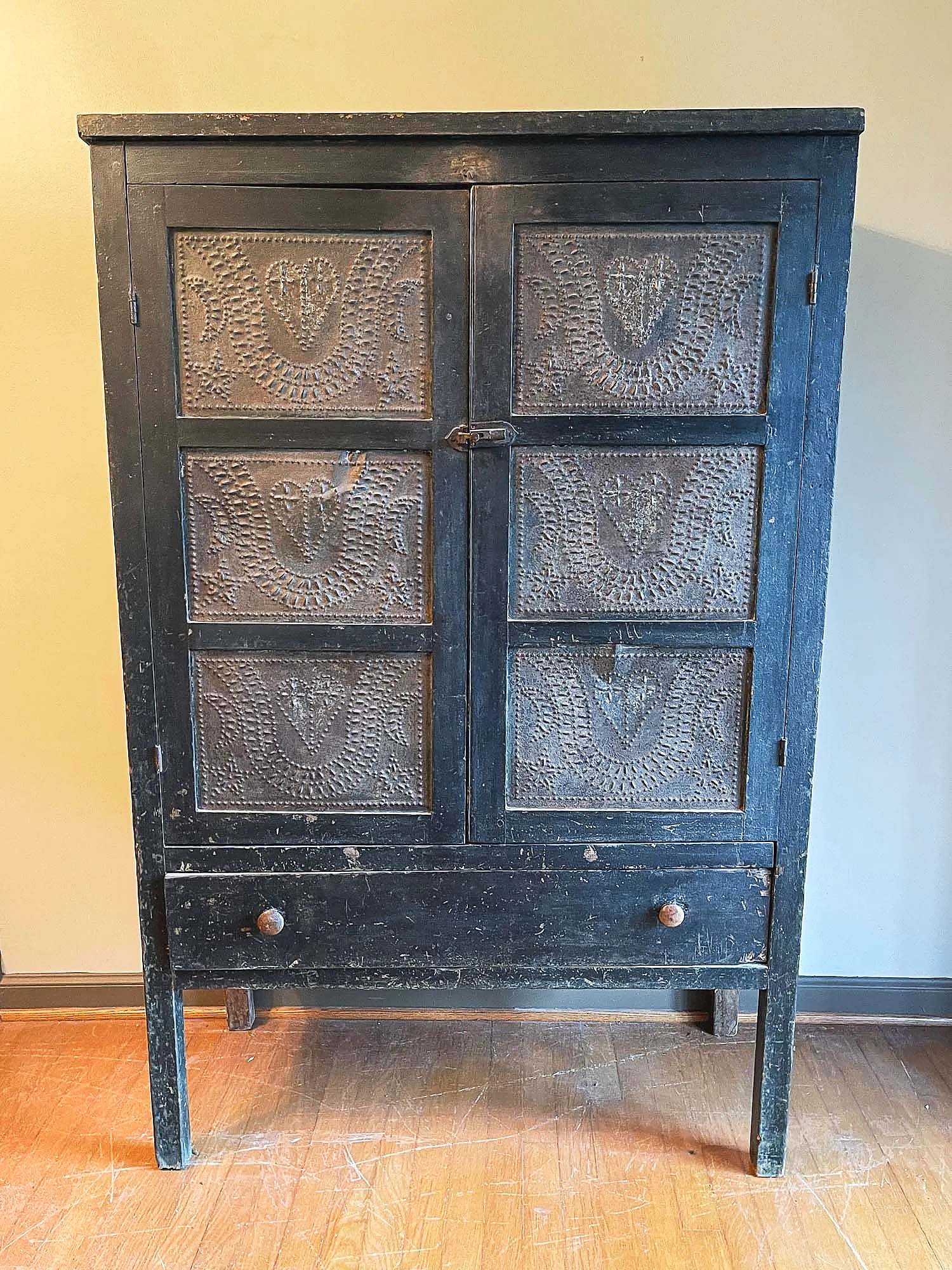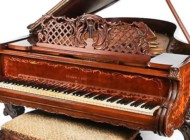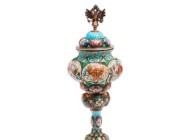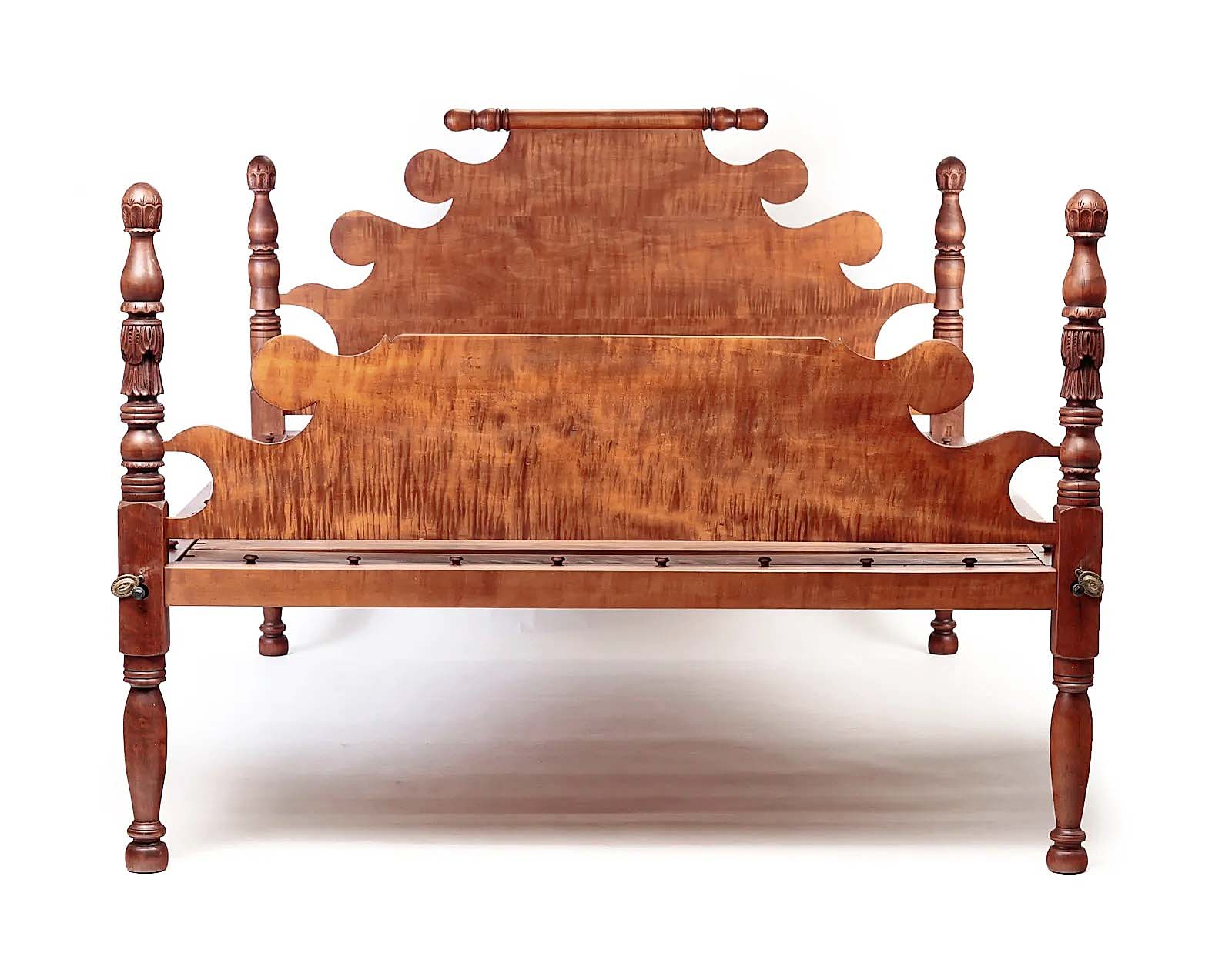
The leading lot of the sale, a tiger maple queen-size bed frame by Neat Pieces in association with David T. Smith, was won for $4,320 ($2/4,000).
Review by Carly Timpson; Photos Courtesy Amelia Jeffers
COLUMBUS, OIHO — Amelia Jeffers’ December 8 sale of Americana, folk art, primitives, early toys, quilts, textiles and stoneware, among other collectibles was fronted by a more than 40-year single-owner collection.
Amelia Jeffers called it a “great auction” and said that it was “a lot of fun” since she knew many of the buyers and felt like she was playing to her strengths in the Americana market.
The top performing lot of the auction was a reddish-brown tiger maple bed frame made by Ohio-based Neat Pieces in association with David T. Smith. Neat Pieces is Smith’s passion project: a contemporary company that specializes in crafting “new” furniture out of antique pieces for people who may want to maintain the aesthetic character of antique furniture but do not want to sacrifice modern comforts. For this bed frame, Nineteenth Century turned and carved bedposts were paired with newly made scrolled head- and footboards as well as contemporary side rails and slats. The bed frame, which fits a queen-size mattress, was bought for $4,320 and “will be staying in Ohio — apropos given that tiger maple is indigenous to this area.” A paint-decorated king-size bed frame from Neat Pieces was also among top performers, earning $1,250.
Jeffers shared that some of the pieces had rather unusual qualities, and based on their performance, it is clear that bidders noticed these as well. One of these, a step-back apothecary cupboard, finished as the second-highest sale of the day. In addition to its quality and condition, this cupboard had a number of distinctive features that helped move it across the block. This one-piece step-back cupboard has 16 drawers at the bottom and double doors that open to four shelves at the top. “It is a super cool piece and is actually quite shallow which makes it convenient to display in your home,” Jeffers shared. The cupboard is only 11½ inches deep and is 71 inches tall. Made from pine, the cupboard is painted in now-worn blue over the original red wash. A Kentucky family will be taking the cupboard home for $3,125 ($1/2,000).
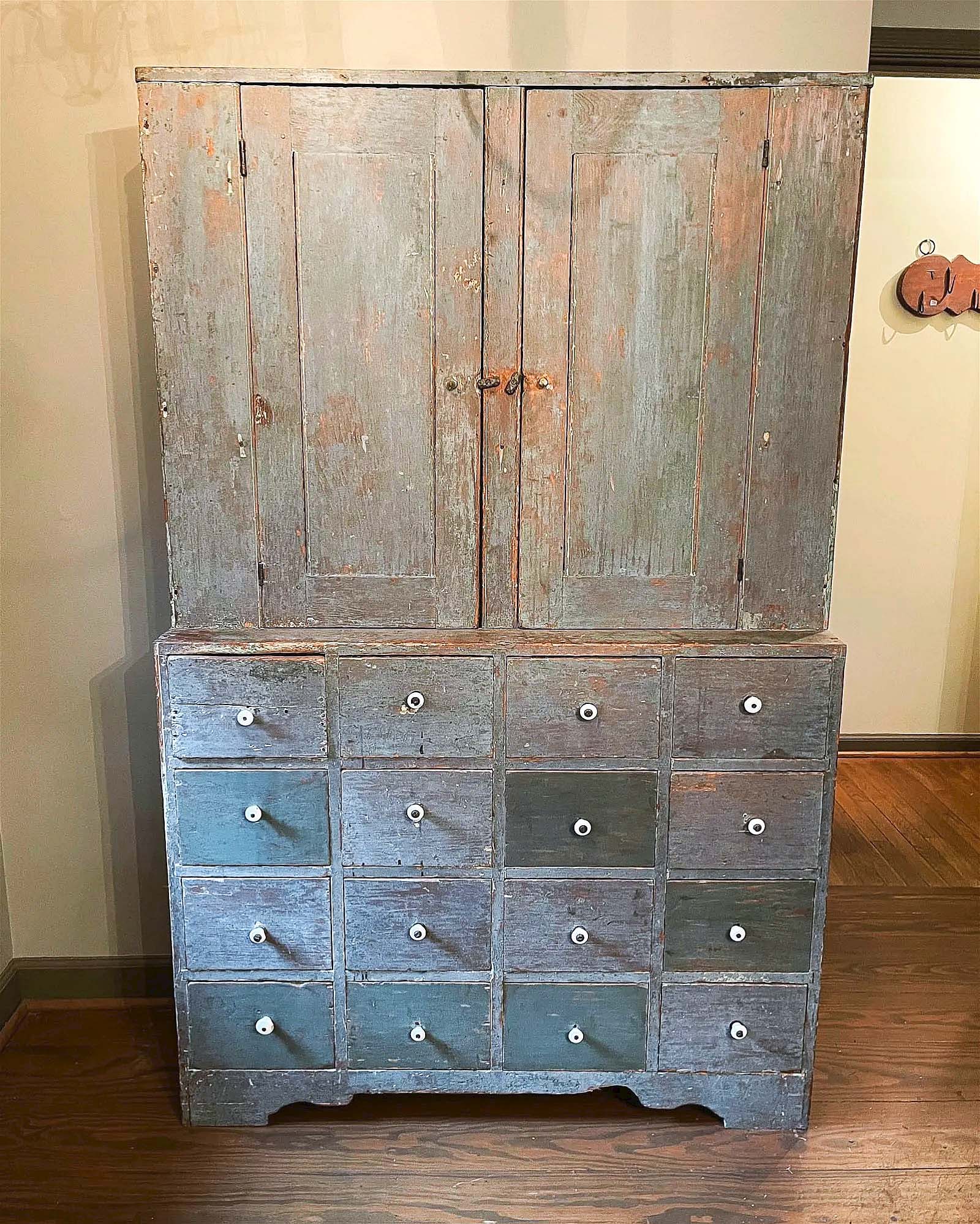
Country painted step back apothecary cupboard, pine, 71 by 45¼ by 11½ inches, earned $3,125 ($1/2,000).
Another unusual piece is the double-well country painted bin which sold for $1,625 ($600/900). Not only did this bin have a lifted lid which is rare on its own, the lid also had a drop-front apron that can function as a shelf when opened. Stenciled under the lid is text that reads, “From Hawk & Strong, Williamsville, O.” Made from poplar wood in the second half of the Nineteenth Century, the bin has been painted blue over its original red finish. As Jeffers herself said, “the paint and the stenciling…it’s all very ‘Ohio.’” The bin measured 35½ by 36 by 26 inches and has a drawer at the bottom.
In addition to the bin, there was another poplar storage cabinet that stunned estimates. A dark blue-green painted pie safe with 12 original punched tin panels generated $1,688 ($200/500). Each of the tins is punched with a design that features a central heart with moons and stars on the outside. Beneath the three shelves housed within the wood and tin doors, there is a thin dovetailed drawer that spans the width of the cabinet. On square post legs, the pie safe stands at 59¾ inches tall, 39 inches wide and 18 inches deep.
Less scarce, but just as coveted, was a 12-gallon decorated stoneware jar with handles. At 22 inches tall, the stoneware jar is painted with cobalt blue freehand plumes and stripes and is stenciled “Hamilton & Jones, Greensboro, PA. 12.” Pieces like this are a regular for Jeffers who said she “appreciates selling them.” Making this piece especially special is the fact that it will be returning to Greensboro, Penn. Jeffers was happy to share, “it’s going back home!” The jar was won at $2,000 ($400/800).
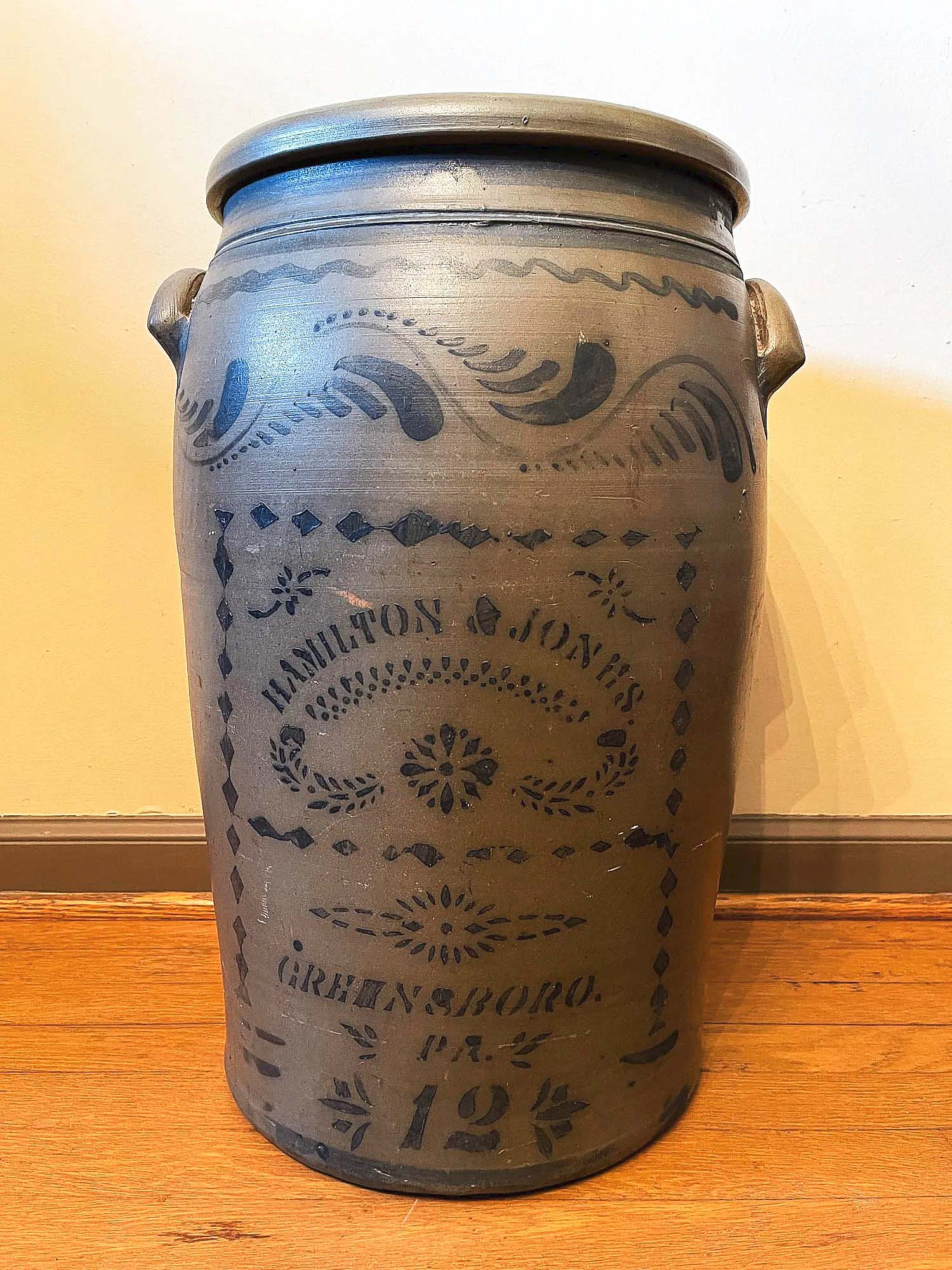
This 12-gallon decorated stoneware jar stenciled “Hamilton & Jones, Greensboro, PA. 12” from the second half of the Nineteenth Century sold for $2,000 ($400/800).
Also common for Jeffers are paintings by Leslie Cope (Ohio, 1913-2002). “We have a lot of them consigned and have been trying to spread them out across sales. Luckily, this is the strongest I’ve seen the market for his work in some time.” In this sale alone, Jeffers offered eight lots of Cope’s work and saw all of them achieve or exceed their estimates. The strongest performers were “Travelers on a Street” (1948) which sold for $3,000 against a $600 to $1,200 estimate and “4H Club Tent” (1994) which sold for $1,250 with an estimate range of $100 to $200.
Needlework samplers are not hard to come by either, but one like the family record sampler of Edwad Creasy and Debroh Cash is slightly less common. Made in England on linen with wool thread in 1818, the 20¾-by-18-inch sampler was bought by a well-known East Coast sampler collector for $1,320 ($200/400).
A uniquely designed late Nineteenth Century country store tin flour bin was also another good find. “The country store flour bin was actually the item that saw the most attention online before the auction,” Jeffers shared. “The color, condition and rarity of this piece” were what catapulted it beyond its $300/600 estimate to achieve $1,188. The bin not only had a lid and drawer but also had seven spice drawers on each side, making it very rare. At 28 inches tall, the bin was painted a vibrant blue and decorated and stenciled “The Cabinet Flour Bin and Sifter, Patented Dec. 27, 1898” in silver.
Amelia Jeffers’ next auction will be the 60-Year Collection of Bruce and Vivalyn Knight on January 5-6. Prices reported include the buyer’s premium, as given by the auction house. For information, 740-362-4771 or www.ameliajeffers.com.

